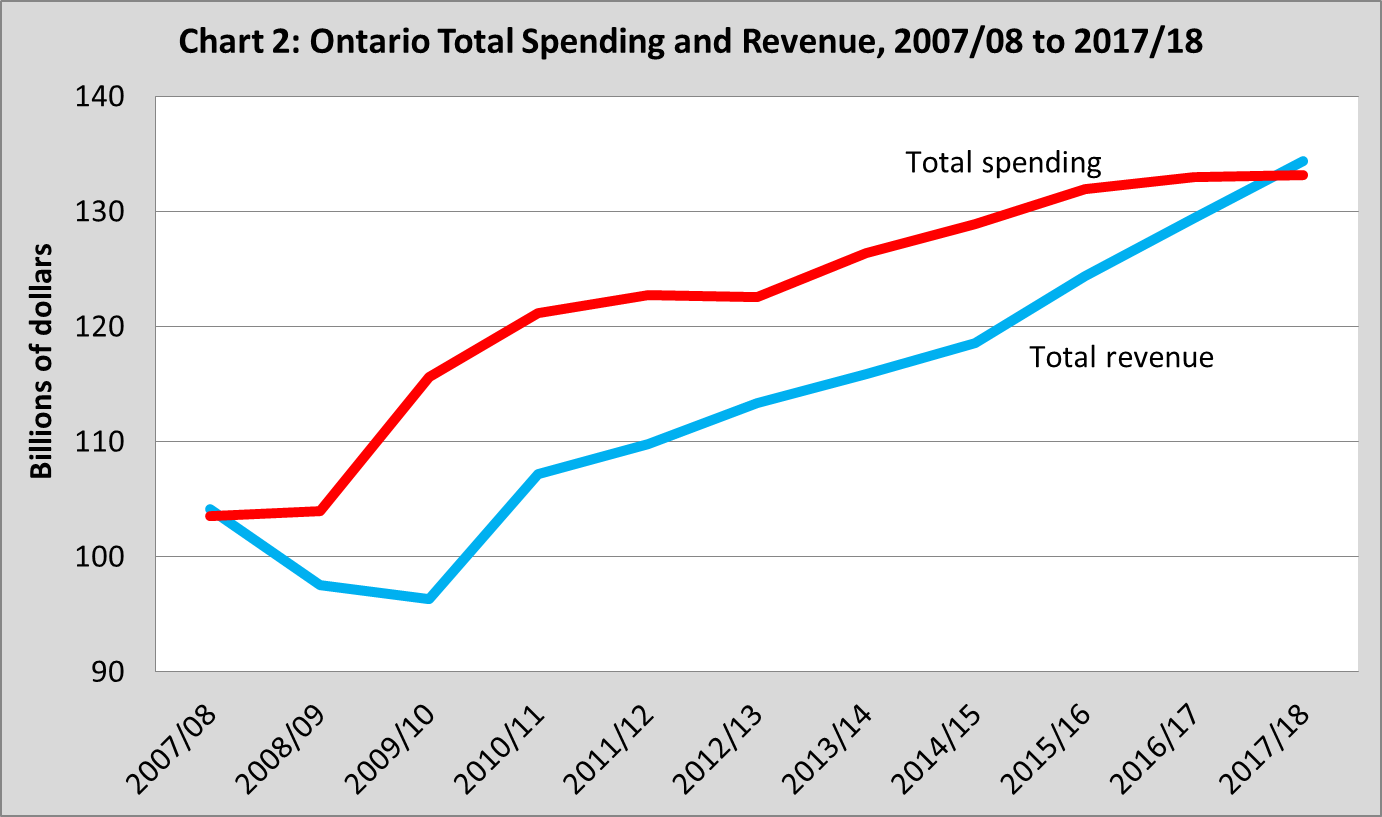What to look for in Ontario’s fiscal update this week
On Thursday, Finance Minister Charles Sousa will provide an update for Ontarians on the state of provincial government finances. One important thing to look for is whether Sousa will present a more realistic plan on how his government expects to eliminate the deficit—currently projected at $8.5 billion this year. To date, the government has hoped for revenues to grow robustly and eventually catch up to total spending, which is set to increase again, albeit at a slower pace than increases in the recent past. But this strategy is a risky one.
As we have noted elsewhere, there are two primary risks to the government’s existing plan to eliminate the deficit by 2017/18. The first is that the government is relying on optimistic revenue projections, which may not come true. The second major risk is the absence of a detailed, specific plan showing how the government will markedly slow the rate of spending growth between now and 2017/18. These are concerns that the government’s own Financial Accountability Office (FAO) has flagged.
A look at the numbers will explain.
Ontario started running a budget deficit in 2008/09, totalling $6.4 billion. In 2009/10, however, the deficit exploded as revenues declined and total spending increased by 11.2 per cent in just one year. The deficit remained above $10 billion from 2010/11 to 2014/15 and is projected to fall slightly to $8.5 billion in 2015/16, to $4.8 billion in 2016/17, and then disappear in 2017/18 (see Chart 1 below).

To understand why this plan is risky, consider the performance of revenues and total spending in two periods: 2010/11 to 2014/15, which includes historical data and 2015/16 to 2017/18, which is based on projected data (see Chart 2).

After two years of decline, revenues rebounded to $107.2 billion in 2010/11, surpassing their pre-recession level. Revenues then grew by an average annual rate of 2.6 per cent up to 2014/15. Over the same period (2010/11 to 2014/15), total spending increased from $121.2 billion to $128.9 billion, growing annually by an average of 1.6 per cent.
Those are the historical numbers. Now, looking ahead to the period 2015/16 to 2017/18, Sousa’s government projects the pace of annual revenue growth to jump from 2.6 per cent to an average rate of 4.3 per cent. Importantly, these projections were made much earlier in the year for April’s budget. Since then, several private-sector forecasters have downgraded their projections for economic growth in Ontario. More generally, forecasters have reduced their growth expectations for Canada as a whole compared to earlier in the year. A slowdown in economic activity means the government will receive less revenue and this should be reflected in the updated projections.
On the other side of the ledger, Sousa projects total spending to increase from 2015/16 to 2017/18 by 1.1 per cent annually, which is approximately one third less than the actual rate observed from 2010/11 to 2014/15 (1.6 per cent). In other words, his government aims to significantly reduce inflation-adjusted spending per person—something it has been unable to do in the past. This is not an unreasonable target, especially given that spending ramped up dramatically in the years before and during the recent recession. But slowing down future spending growth by such a magnitude requires an explicit plan for doing so, which the government has not provided.
This year will mark Ontario’s eighth consecutive year of deficit spending and the province will have added $142.3 billion in new net debt since 2007/08, bringing the total owed to $298.9 billion in 2015/16. That’s more than $21,000 for every Ontarian or approximately 40 per cent of the provincial economy.
It’s critical that Sousa presents a detailed and realistic plan for how his government will balance the budget and begin to rein in government debt. Wishful thinking will not cut it.
Authors:
Subscribe to the Fraser Institute
Get the latest news from the Fraser Institute on the latest research studies, news and events.

